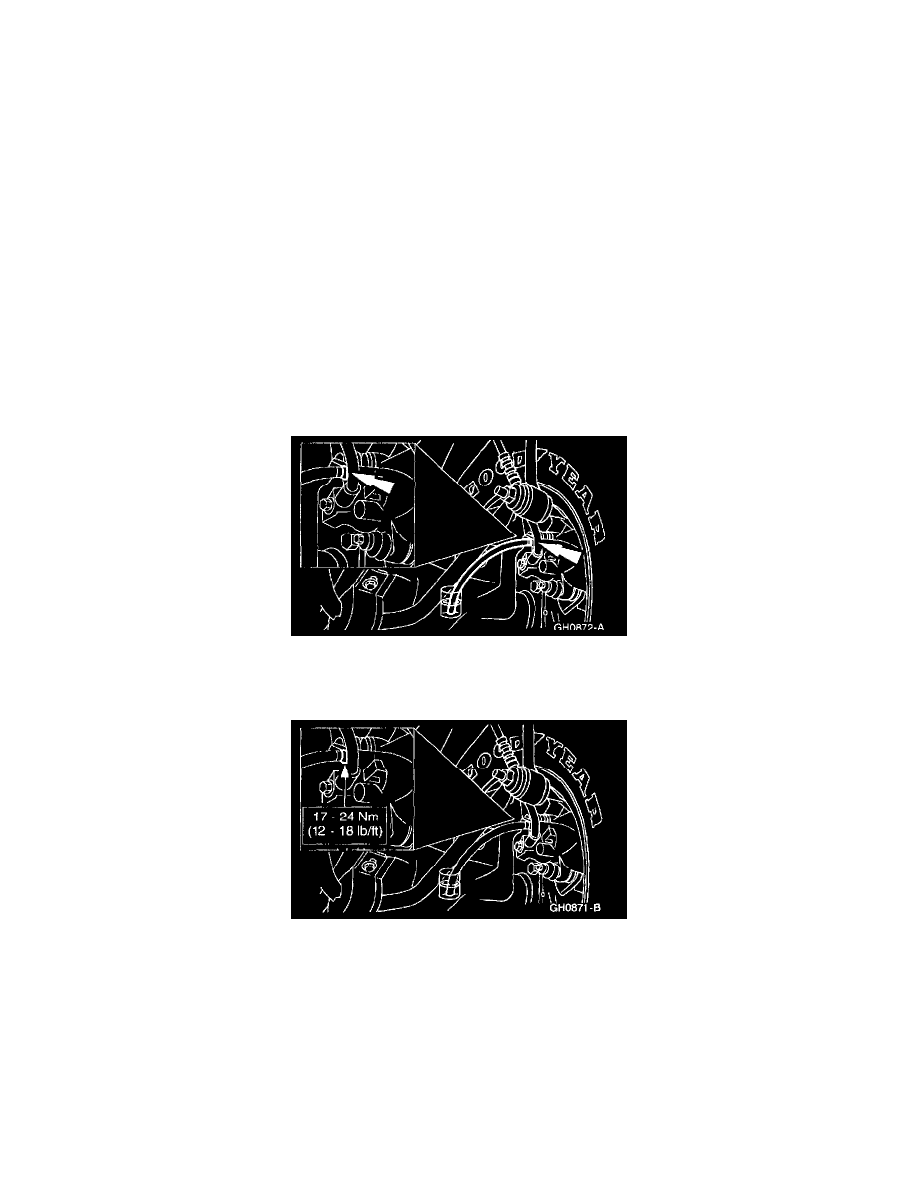Navigator 4WD V8-5.4L SOHC VIN L (1998)

Brake Bleeding: Service and Repair
4 Wheel Anti-Lock Brakes (4WABS)
WARNING: BRAKE FLUID CONTAINS POLYGLYCOL ETHERS AND POLYGLYCOLS. AVOID CONTACT WITH EYES. WASH
HANDS THOROUGHLY AFTER HANDLING. IF BRAKE FLUID CONTACTS EYES, FLUSH EYES WITH RUNNING WATER FOR 15
MINUTES. GET MEDICAL ATTENTION IF IRRITATION PERSISTS. IF TAKEN INTERNALLY, DRINK WATER AND INDUCE
VOMITING. GET MEDICAL ATTENTION IMMEDIATELY.
CAUTION:
-
Do not allow the brake master cylinder reservoir to run dry during the bleeding operation. Keep the brake master cylinder reservoir filled with
the specified brake fluid. Never reuse the brake fluid that has been drained from the hydraulic system.
-
Brake fluid is harmful to painted and plastic surfaces. If brake fluid is spilled onto a painted or plastic surface, immediately wash it with water.
NOTE:
-
When any part of the hydraulic system has been disconnected for repair or replacement, air may get into the system and cause spongy brake
pedal action. This requires bleeding of the hydraulic system after it has been properly connected. The hydraulic system can be bled manually
or with pressure bleeding equipment.
-
This procedure only needs to be performed if the 4 wheel anti-lock brake (4WABS) hydraulic control unit (HCU) has been replaced.
-
One conventional pressure bleed cycle consists of advancing the brake pedal to its depressed position, opening the disc brake caliper bleeder
screw, allowing fluid to be released into the waste container, closing the disc brake caliper bleeder screw and releasing the brake pedal.
-
Performing the NGS program routine drives entrapped air from the otherwise inaccessible lower section of the 4WABS valve into the upper
sections (accessible by bleeding the brakes). Subsequent bleedings remove the air from the system.
-
Add recommended brake fluid as necessary throughout the procedure.
1. Connect a clear waste line to the RH rear disc brake caliper bleeder screw and the other end in a container partially filled with recommended brake
fluid.
2. With the RH rear disc brake caliper bleeder screw open, cycle the brake pedal until no more air is seen in the waste line.
3. Tighten the RH rear disc brake caliper bleeder screw and disconnect the waste line.
